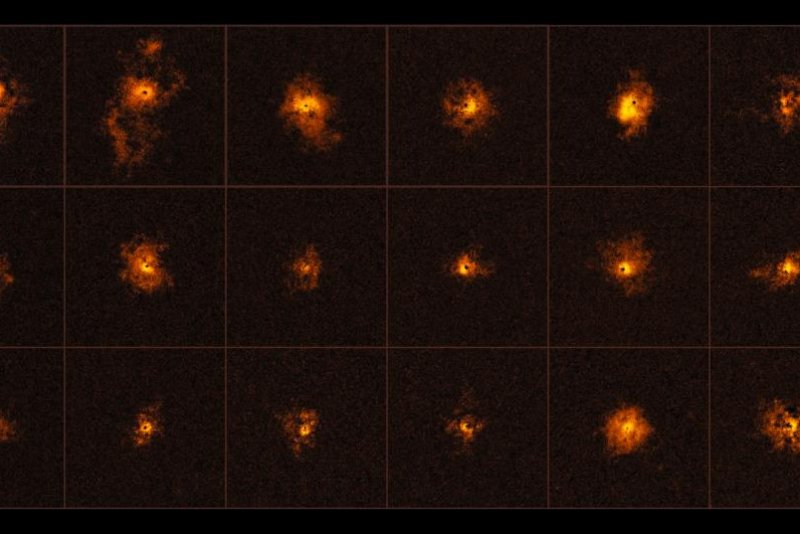Researchers recently found a surprising number of quasars with halos using the Very Large Telescope's MUSE instrument. Photo by ESO/Borisova et al.
ZURICH, Switzerland, Oct. 26 (UPI) -- Previous studies suggest only 10 percent of all quasars feature halos. A recent survey of quasars by the Very Large Telescope's MUSE instrument yielded 19 quasars -- all with halos.
What's more surprising, the gas comprising the 19 halos was found to be cold, just 10,000 degrees Celsius. Models of halo-crowned quasars suggest gas so intimately arranged should register temperatures in the millions.
"Cold" and "intimately" are relative terms when discussing space. The halos surrounding the newly studied quasars stretch as far as 300,000 light-years from the objects' centers.
The new findings -- detailed in the Astrophysical Journal -- are likely to force astronomers to reconsider the models they've designed to understand quasars.
Quasars are a seemingly infinite source of amusement for astronomers -- in this instance a team from Swiss Federal Institute of Technology.
Quasars are black holes that give off intense bursts of radiation from their accretion disk. The accretion disk is the dense circle of gas and debris pulled in by the black hole's gravity. As the material is condensed, it gives off significant amounts of energy. Quasars are the most luminous objects in the universe.
As to why and how astronomers happened upon so many halos, researchers say it may have something to do with their tools.
The Very Large Telescope and its instruments, found at the European Southern Observatory's Paranal Observatory in Chile, continue to be deployed to impressive ends.
"It is still too early to say if this is due to our new observational technique or if there is something peculiar about the quasars in our sample," lead study author Elena Borisova, from the ETH Zurich, said of the surprising findings. "So there is still a lot to learn; we are just at the beginning of a new era of discoveries."
Researchers are hopeful that the same tools that yielded new questions can ultimately help them find new answers.
"We have exploited the unique capabilities of MUSE in this study, which will pave the way for future surveys," said co-author Sebastiano Cantalupo. "Combined with a new generation of theoretical and numerical models, this approach will continue to provide a new window on cosmic structure formation and galaxy evolution."















